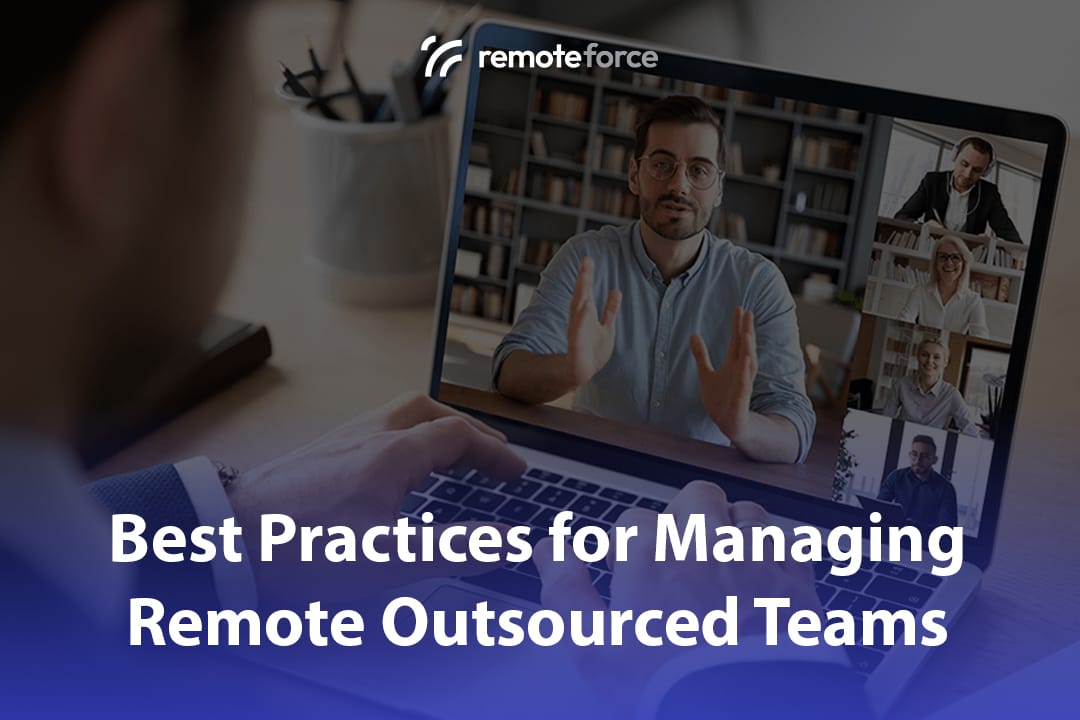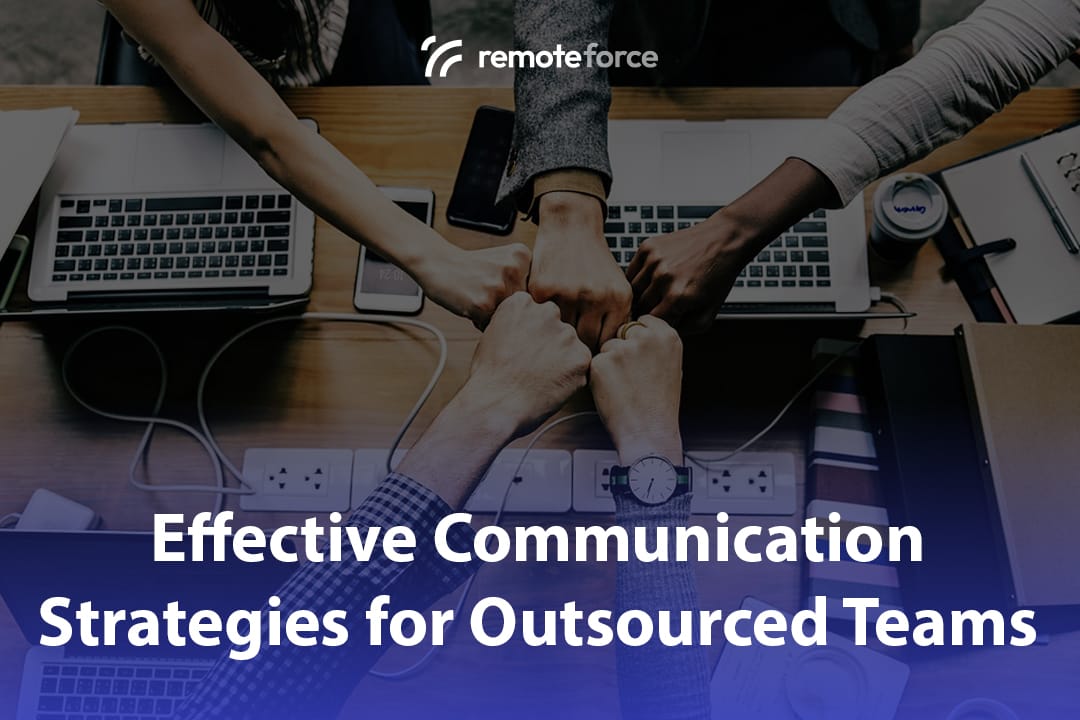In today’s global, flexible economy, businesses increasingly rely on a hybrid workforce model: a mix of in-house employees, remote workers, and specialized outsourced teams. While outsourcing services like digital marketing, web development, or legal support is a proven strategy for efficiency, managing these teams remotely adds a new layer of complexity.
How do you ensure productivity, maintain communication, and build a cohesive team culture when your outsourced talent is not only in a different company but also in a different physical location?
The key is to move beyond a simple “vendor-client” dynamic. Effective remote management requires intentional strategies focused on integration, clarity, and trust.
Table of Contents
ToggleThe Core Challenge: Bridging the Double Gap
Managing remote outsourced employees involves bridging two gaps simultaneously:
- The Organizational Gap: They work for a different company (the outsourcing vendor) with its own culture, processes, and priorities.
- The Physical Gap: They are not in your office, meaning you lose the benefit of face-to-face interaction, spontaneous collaboration, and simple observation.
Failing to bridge these gaps leads to misalignment, missed deadlines, low engagement, and a feeling that your outsourced team is just a “black box” of tasks. The following best practices are designed to prevent that.
How to Successfully Manage Remote Outsourced Employees: Best Practices

1. The Foundation: A Rigorous Onboarding Process
You wouldn’t hire an in-house employee and have them start work with zero introduction. Apply the same logic to your outsourced team. A strong onboarding process is the single most important step for long-term success.
- Cultural Onboarding: Don’t just explain the task. Explain the why. Share your company’s mission, vision, values, and brand guidelines. Help them understand who your customers are and what you aim to achieve.
- Process Onboarding: Provide a comprehensive playbook that includes:
- Your primary points of contact.
- Communication protocols (e.g., “Slack for quick questions, email for summaries, Asana for task updates”).
- Key performance indicators (KPIs) and quality standards.
- Technical Onboarding: Ensure they have secure access to all necessary tools before day one (e.g., project management software, VPNs, shared drives, communication platforms).
2. Technology: Use a Unified, Centralized Tech Stack
Disjointed tools are the enemy of remote collaboration. Don’t force your outsourced team to use one set of tools while your in-house team uses another.
- One Source of Truth (Project Management): Standardize on one platform (like Asana, Trello, Jira, or Monday.com) for all task assignments, deadlines, and progress tracking. This creates universal visibility for everyone.
- One Source of Truth (Communication): Integrate the outsourced team directly into your primary communication tool (like Slack or Microsoft Teams). Create shared channels (e.g.,
#project-alpha,#marketing-team) so they are part of the real-time conversation, not isolated in an email chain.
3. Communication: Over-Communicate with Clarity
When you can’t walk over to someone’s desk, you must be intentional and structured in your communication.
- Regular, Rhythmic Meetings: Establish a fixed meeting cadence. A daily 15-minute stand-up (via video) is perfect for quick updates and roadblock removal. A weekly 1-hour tactical meeting can be used for deeper planning and performance review.
- Video On by Default: Face-to-face interaction, even virtual, is crucial for building rapport and catching non-verbal cues. Encourage video calls as the default for all meetings.
- Be Explicit: Remote communication lacks context. Be overly clear in your written requests. Specify deadlines (including time zones), deliverables, and the desired outcome.
4. Culture: Integrate, Don’t Isolate
The fastest way to get disengaged, low-quality work is to treat your outsourced team like “outsiders.” The goal is to foster a “One Team” culture.
- Invite Them to the “Room”: Include your outsourced team members in relevant all-hands meetings, project kick-offs, and brainstorming sessions. Hearing strategic updates directly makes them feel valued and aligned.
- Use Inclusive Language: Use terms like “our team,” “we,” and “us” instead of “you guys” (the vendor) and “us” (the client).
- Recognize Their Work: When an outsourced team member does great work, give them a public shout-out in a shared Slack channel or a team meeting. Recognition is a powerful, low-cost motivator.
5. Management: Focus on Outcomes, Not Hours
Micromanaging remote employees is ineffective and demotivating. This is especially true for skilled professionals like developers, lawyers, or senior accountants whom you’ve hired for their expertise.
- Manage by Deliverables: Shift your focus from activity (are they online?) to outcomes (is the work being delivered on time and to the quality standard?).
- Establish Clear KPIs: Your SLA should define what success looks like. Track performance against those metrics. This data-driven approach removes emotion and builds accountability.
- Trust, but Verify: Trust them to manage their own time and workflow, but verify progress through your project management tools and regular check-ins.
6. Security: Implement Robust Remote Protocols
With a remote and external workforce, data security is paramount.
- Secure Access: Insist on the use of VPNs (Virtual Private Networks) and two-factor authentication (2FA) for accessing any of your company’s systems.
- Access Control: Grant access only to the systems and data necessary for their specific role (Principle of Least Privilege).
- Clear Data Handling Policies: Ensure your contract clearly outlines policies for data confidentiality, storage, and deletion.
Conclusion: Intentional Management is the Key
Managing remote outsourced employees is not harder than managing in-house teams; it’s just different. It requires a more intentional, structured, and empathetic approach.
By investing in a proper onboarding, unifying your technology, fostering a “One Team” culture, and communicating with absolute clarity, you transform your outsourced workforce from a simple cost center into a powerful, integrated, and highly productive extension of your business.
At RemoteForce, our professionals are not only experts in their fields—whether digital marketing, law, or accounting—but also trained in remote collaboration best practices. We provide talent ready to integrate seamlessly, making your work easier.




